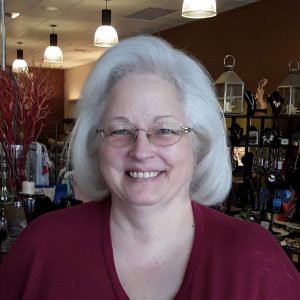Lecture at museum to tell story of young boy’s account of the Civil War
April 29, 2019When LeRoy Wiley Gresham was 8 years old, he and some friends were playing where they shouldn’t have been – in a burned-out building in his hometown of Macon, Ga. The chimney collapsed, and one of LeRoy’s legs was crushed.
His days as a healthy, active child was over. But his mind was strong, and at the age of 12 he started a diary. It was 1860, and his world was about to be turned upside-down again, by the Civil War. The record he left of everyday life on the Confederate home front is punctuated by insightful commentary on military, political and economic matters that is extraordinary coming from one so young.
That diary has now been published as The War Outside My Window: The Civil War Diary of LeRoy Wiley Gresham, 1860-1865, edited by Janet E. Croon. The editor will speak on the subject on Friday, May 17, at noon at the South Carolina Confederate Relic Room and Military Museum in Columbia. The free lecture, part of the museum’s Lunch and Learn series, is open to the public.
The young diarist followed the war closely and intelligently, tracking the actions of both the Army of Northern Virginia and Army of Tennessee. He kept up with naval activity, too, as the South tried constantly to run the Union blockade. He had a firm grasp of how the blockade affected Macon.
The war came to Macon in 1864 in the form of a raid by Union cavalry leader George Stoneman, who was captured there. But LeRoy kept up with the war wherever it was happening. The editor of the local newspaper was one of the prominent people who frequented his home.
And the boy didn’t hesitate to question decisions made by Jefferson Davis and other Confederate leaders: Why are they still allowing people to grow all this cotton when we can’t sell it anywhere? he demanded to know. Cotton was piling up, and he believed the land could be better used to grow food for troops and civilians.
He also tells us what was happening close to home – with his family, and with the slaves who lived on their two plantations outside of town. At one point, he became upset over the suffering of some of those slaves when they returned home with sickness they contracted when put to work building fortifications outside Savannah.
He could also be entertaining. “The kid has wit,” says Ms. Croon of LeRoy. “He is funny.”
But tragically, much of his writing chronicles his own suffering. His crippled leg wasn’t his only affliction. He had a rare form of tuberculosis – but he didn’t know that’s what it was. He describes his pain, his ineffective medications and treatments, what he was able to eat and what he couldn’t.
We know what was wrong with him today because Ms. Croon gleaned medical details from the diary and her publisher sent them to another writer who happens to be a surgeon. He provided the diagnosis.
His account ends just before LeRoy’s death at the age of 17 in 1865, even as the Confederacy itself was dying.
She was attracted to this project, her first book, because she has been a teacher, and she knows what it takes to get students engaged with history. “They can really be attracted to something by someone their age,” she says, and accordingly she has helped developed a study guide so that middle-schoolers might learn from LeRoy’s diary.
Ms. Croon holds a bachelor’s degree in political science, modern European history, and Russian language and area studies from the University of Illinois at Urbana-Champaign, and a master’s degree in international studies from the University of Dayton. She has taught International Baccalaureate History for nearly two decades, and developed a deep interest in the Civil War from living in northern Virginia.
About the South Carolina Confederate Relic Room and Military Museum
Founded in 1896, the South Carolina Confederate Relic Room and Military Museum is an accredited museum focusing on South Carolina’s distinguished martial tradition through the Revolutionary War, Mexican War, Civil War, Spanish-American War, World Wars I and II, Vietnam, the War on Terror, and other American conflicts. It serves as the state’s military history museum by collecting, preserving, and exhibiting South Carolina’s military heritage from the colonial era to the present, and by providing superior educational experiences and programming. It is located at 301 Gervais St. in Columbia, sharing the Columbia Mills building with the State Museum. For more information, go to https://crr.sc.gov/.


















